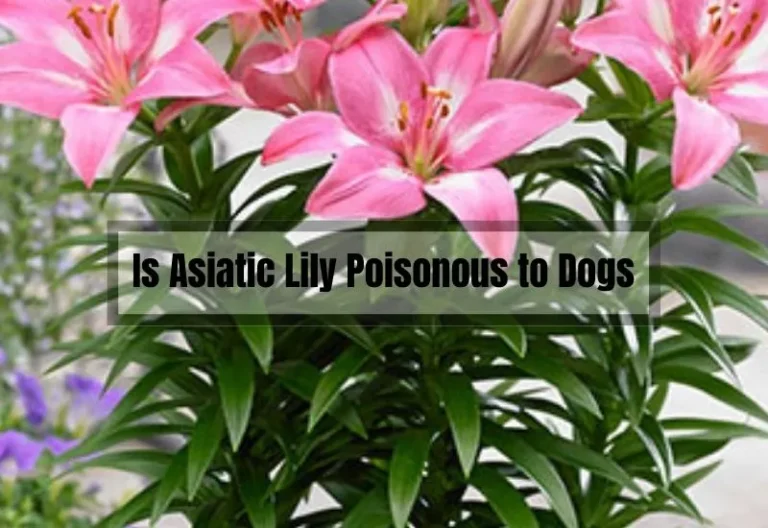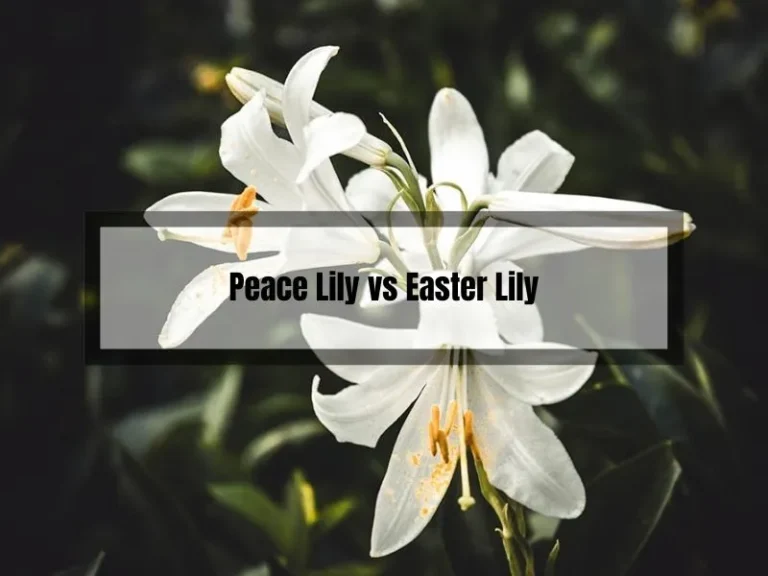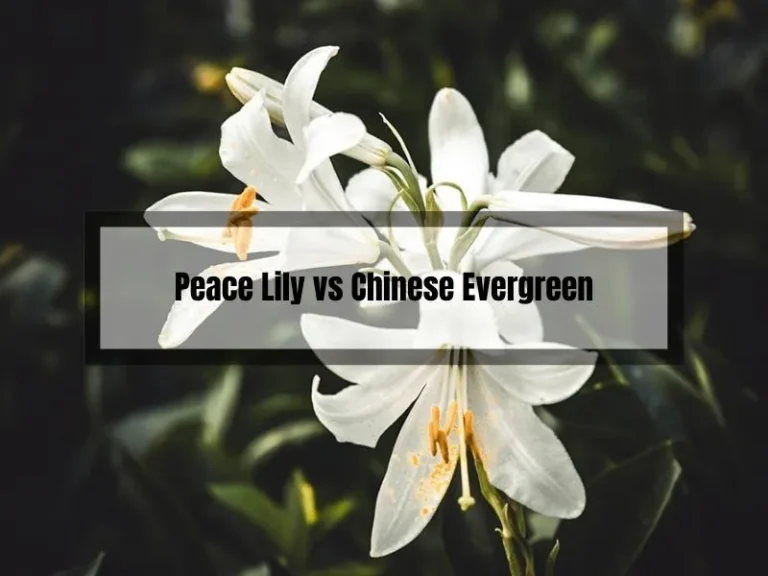Death Lily vs Peace Lily: A Comparison of Two Popular Houseplants
Curious about the differences between Death Lily and Peace Lily? Despite their similar names, these two plants belong to entirely different families. In this article, we’ll explore their unique characteristics and help you choose the right one for your home or garden.
Death Lily, native to North America, is also known as Zigadenus or Meadow Garlic. It has a tall stem with grass-like leaves and produces white or greenish flowers in late spring or early summer. Be aware that it’s toxic to ingest, making it important to keep away from children and pets.
Peace Lily, native to Central and South America, is also called Spathiphyllum or White Sails. It features dark green leaves and blooms white flowers year-round. This popular houseplant is known for its easy care and air-purifying qualities.
Key Takeaways
- Death Lily and Peace Lily come from different plant families.
- Death Lily is toxic and should be kept away from children and pets.
- Peace Lily is a popular houseplant that is easy to care for and has air-purifying properties.
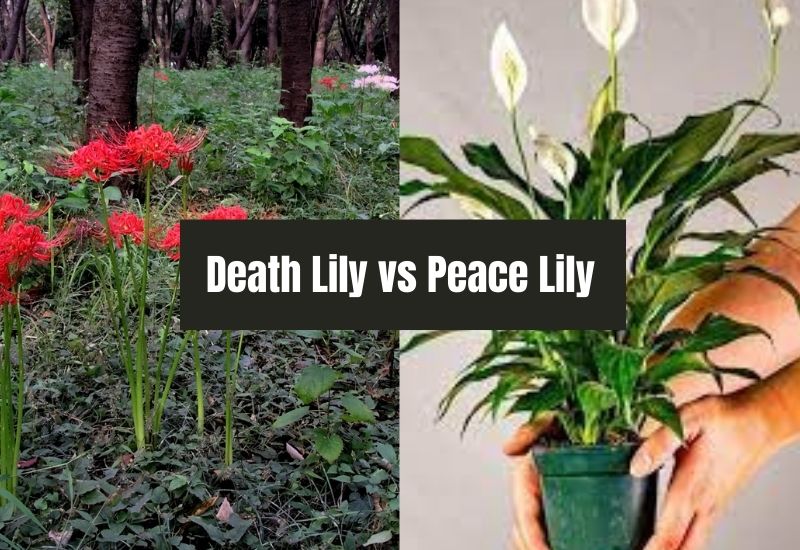
Death Lily vs Peace Lily
When it comes to comparing Death Lily vs Peace Lily, there are a few key differences to keep in mind. Let’s take a closer look at each plant and see what sets them apart.
Botanical Classification
First and foremost, it’s important to note that Death Lilies and Peace Lilies come from entirely different plant families.
Death Lilies belong to the Melanthiaceae family, while Peace Lilies are part of the Araceae family. This means that they have different physical characteristics and growing requirements.
Appearance
In terms of appearance, Death Lilies and Peace Lilies are quite different. Death Lilies have tall, slender stems with small, bell-shaped flowers at the top. The flowers can be white, yellow, or green and have a distinctive fragrance.
Peace Lilies, on the other hand, have broad, dark green leaves and white flowers that resemble calla lilies. The flowers are surrounded by a hood-like spathe that gives them a unique appearance.
Toxicity
One of the most notable differences between Death Lilies and Peace Lilies is their toxicity. While Peace Lilies are safe for pets and humans to be around, Death Lilies are highly toxic and can cause serious harm if ingested.
This is because Death Lilies contain a toxin called zygacine, which can cause vomiting, diarrhea, seizures, and even death in severe cases.
Care Requirements
When it comes to caring for Death Lilies vs Peace Lilies, there are a few key differences to keep in mind. Death Lilies are native to North America and prefer to grow in moist, shady areas.
They require well-draining soil and regular watering to thrive. Peace Lilies, on the other hand, are native to tropical regions and prefer bright, indirect sunlight. They can tolerate low light but will not bloom as well in these conditions. They also prefer to be kept moist but not waterlogged.
Understanding Death Lily
If you’re looking for a unique and exotic plant to add to your collection, then you might want to consider the Death Lily. Despite its ominous name, this plant can add a touch of elegance and sophistication to any space.
In this section, we’ll take a closer look at the Death Lily and provide you with all the information you need to grow and care for this stunning plant.
Origin and History
The Death Lily, also known as the “Toad Lily,” is a member of the Melanthiaceae family. It is native to China and Japan, where it grows in cool, moist, and shady areas.
The plant gets its name from its toxic properties, which can be fatal if ingested. The Death Lily has been used in traditional medicine for centuries, but it is important to note that it should not be consumed without proper preparation and dosage.
Physical Characteristics
The Death Lily is a unique and fascinating plant that boasts long, slender leaves with a smooth surface, giving it an elegant appearance. The leaves are a dark green color and can grow up to 6 inches long.
The plant produces small, bell-shaped flowers that are white or light purple in color. The flowers bloom in the fall and are followed by small, berry-like fruits.
Growing Conditions and Care
The Death Lily is a relatively easy plant to grow, but it does require specific growing conditions to thrive. The plant prefers cool temperatures and moist soil, so it is best to keep it in a shady area.
The soil should be well-draining and rich in organic matter. The plant should be watered regularly, but be careful not to overwater it, as this can lead to root rot.
The Death Lily can be propagated by division or by seed. To propagate by division, wait until the plant has finished flowering and then carefully divide the rhizomes. To propagate by seed, collect the berries when they are ripe and sow the seeds in a well-draining soil mixture.
Common Problems and Solutions
The Death Lily is susceptible to a few common problems, including spider mites, mealybugs, and scale insects. These pests can be controlled by using insecticidal soap or by wiping the leaves with a damp cloth.
The plant may also experience leaf yellowing or wilting if it is not getting enough water or if the soil is too dry. To remedy this, water the plant more frequently and ensure that the soil is moist.
Understanding Peace Lily
If you’re looking for an easy-to-care-for houseplant that also looks great, you can’t go wrong with a peace lily. These plants are known for their lush green leaves and striking white flowers, and they’re a popular choice for both novice and experienced gardeners alike.
In this section, we’ll explore everything you need to know about peace lilies, from their origin and history to their growing conditions and common problems.
Origin and History
Peace lilies, also known as Spathiphyllum, are native to tropical regions of the Americas and Southeast Asia. They were first discovered in the late 19th century by Gustav Wallis, a German plant collector who was traveling through the rainforests of Colombia.
Wallis was struck by the plant’s elegant beauty and brought it back to Europe, where it quickly became a popular houseplant.
Physical Characteristics
Peace lilies are known for their glossy, dark green leaves and striking white flowers. The flowers are actually spathes, or modified leaves, that surround a central spike of tiny flowers.
Peace lilies can grow up to 3 feet tall, although most indoor varieties stay smaller than that.
| Physical Characteristics |
|---|
| Leaf structure and appearance |
| Flower appearance |
| Size |
Growing Conditions and Care
Peace lilies are relatively easy to care for, but they do have a few specific requirements. Here are some tips for keeping your peace lily healthy and happy:
- Light: Peace lilies prefer bright, indirect light. Direct sunlight can scorch their leaves, so it’s best to keep them near a window with a sheer curtain.
- Water: Peace lilies like moist soil, but they don’t like to be overwatered. Water your peace lily once a week, or whenever the top inch of soil feels dry to the touch.
- Humidity: Peace lilies thrive in humid environments. If your home is dry, consider placing a tray of water near your peace lily or using a humidifier.
- Fertilizer: Peace lilies don’t need a lot of fertilizer, but they do benefit from occasional feedings. Use a balanced, water-soluble fertilizer once a month during the growing season.
- Repotting: Peace lilies like to be slightly root-bound, so you don’t need to repot them very often. However, if your peace lily is outgrowing its pot or if the soil is getting too compacted, it’s time to repot.
Common Problems and Solutions
Like all plants, peace lilies can experience a few common problems. Here are some issues you might encounter, and how to solve them:
| Common Problems | Solutions |
|---|---|
| Yellow leaves | Too much water or direct sunlight. Move your peace lily to a shadier spot and cut back on watering. |
| Brown tips on leaves | Too little water or humidity. Make sure your peace lily is getting enough water and consider using a humidifier. |
| Wilting or drooping leaves | Underwatering. Water your peace lily more frequently and make sure the soil is moist. |
| Pests | Mealybugs, spider mites, and scale insects can all be a problem for peace lilies. Treat infestations with insecticidal soap or neem oil. |
Overall, peace lilies are a great choice for anyone looking for an easy-to-care-for houseplant. With a little bit of attention and care, your peace lily will thrive and bring a touch of tropical beauty to your home.
Comparing Death Lily and Peace Lily
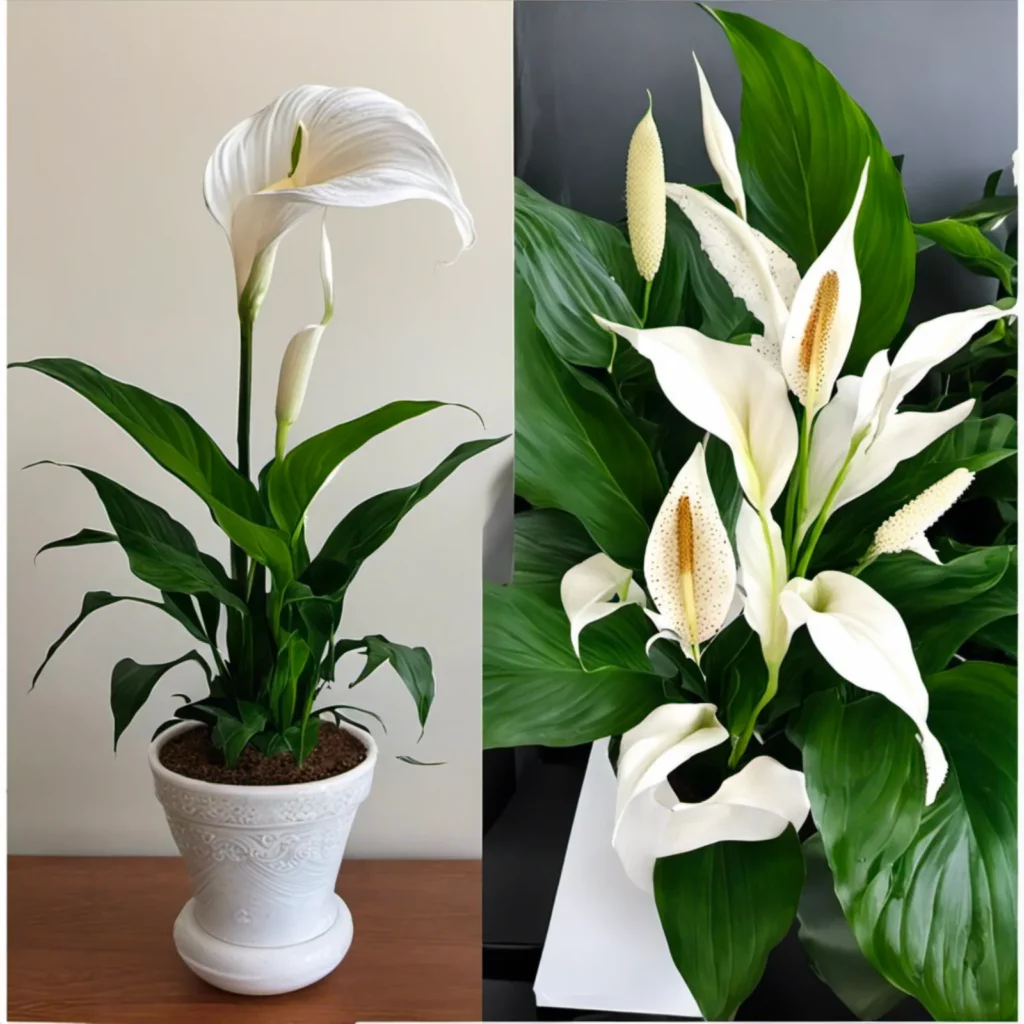
If you’re looking for a houseplant that can add a touch of elegance to your home, peace lilies and death lilies are both excellent choices.
But what are the differences between these two lilies? In this section, we will compare death lilies and peace lilies in terms of their appearance, care, and suitability.
Appearance Comparison
Death lilies (Toxicoscordion venenosum) and peace lilies (Spathiphyllum wallisii) may sound similar, but they actually differ quite a bit in terms of appearance. Death lilies have long, slender leaves with a smooth surface, giving them an elegant appearance.
They can grow up to 3 feet tall and produce small, white flowers. On the other hand, peace lilies have broad, dark green leaves that grow up to 20 inches long. They produce white flowers that can grow up to 6 inches long.
Care Comparison
Both death lilies and peace lilies are relatively easy to care for. They prefer indirect sunlight and moist soil, but they can tolerate low light conditions and occasional drying out. However, there are some differences in their care requirements.
Death lilies are toxic and should be kept away from children and pets. They also prefer well-draining soil and should not be overwatered. Peace lilies, on the other hand, are not toxic but can cause mild irritation if ingested. They prefer slightly acidic soil and benefit from regular fertilization.
Here’s a quick comparison of the care requirements for death lilies and peace lilies:
| Care Requirements | Death Lily | Peace Lily |
|---|---|---|
| Sunlight | Indirect | Indirect |
| Watering | Moist, well-draining | Moist, slightly acidic |
| Fertilization | Occasional | Regular |
| Toxicity | Toxic | Mildly Irritating |
Suitability Comparison
When it comes to choosing between death lilies and peace lilies, there are a few factors to consider. Death lilies are a good choice if you want a unique and elegant plant, but you should keep in mind that they are toxic and require well-draining soil.
Peace lilies, on the other hand, are a great choice if you want a low-maintenance plant that can purify the air in your home. They are also non-toxic and can be a good choice if you have pets or small children.
Frequently Asked Questions (FAQ)
Can peace lilies and death lilies crossbreed?
No, peace lilies and death lilies cannot crossbreed, as they belong to different plant families and have distinct genetic makeups.
Are there any non-toxic alternatives to death lilies for landscaping purposes?
Yes, there are many non-toxic alternatives to death lilies that can be used in landscaping. Some options include daffodils, tulips, and irises, which offer similar visual appeal without the risks associated with toxic plants.
How can I tell if my peace lily needs more or less water?
If your peace lily’s leaves are drooping and the soil feels dry, it likely needs more water. However, if the leaves are yellowing and the soil is consistently wet, you may be overwatering the plant. Adjust your watering schedule accordingly to maintain a consistently moist, but not waterlogged, soil.
What should I do if I suspect my pet has ingested part of a death lily plant?
If you believe your pet has ingested any part of a death lily plant, seek veterinary help immediately. Time is of the essence in these cases, as prompt treatment can prevent more severe symptoms and improve the chances of recovery. Keep a close eye on your pet for any signs of poisoning and provide your veterinarian with as much information as possible about the situation.
Conclusion
And there you have it – a comprehensive comparison of death lilies and peace lilies. It’s crucial to understand the key differences between these two plants, as it can help ensure your safety and the wellbeing of your loved ones and pets.
With their unique characteristics, both plants have a place in the vast and diverse world of flora, but it’s essential to recognize the potential dangers associated with death lilies and to appreciate the air-purifying abilities of peace lilies.
So, whether you’re a seasoned plant enthusiast or just starting your botanical journey, I hope this post has given you valuable insights into these captivating plants. Keep exploring and learning about the fascinating world of plants, and may your green thumb continue to flourish!



